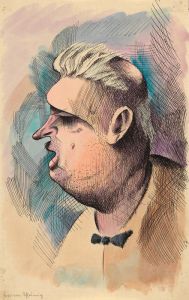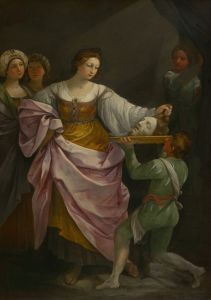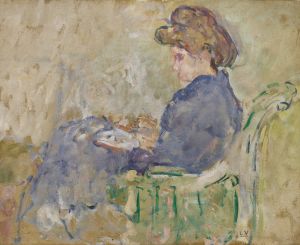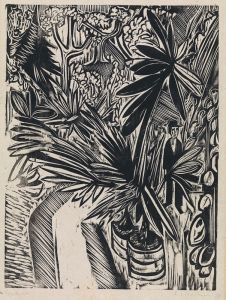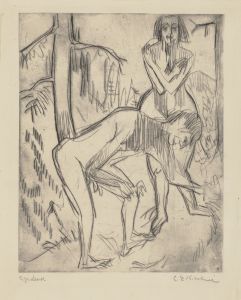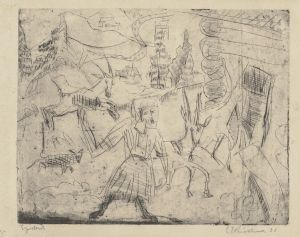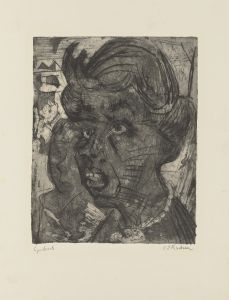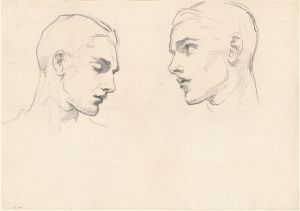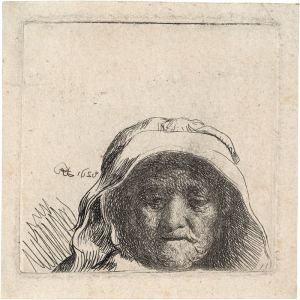
Emporblickender Frauenkopf
A hand-painted replica of Ernst Ludwig Kirchner’s masterpiece Emporblickender Frauenkopf, meticulously crafted by professional artists to capture the true essence of the original. Each piece is created with museum-quality canvas and rare mineral pigments, carefully painted by experienced artists with delicate brushstrokes and rich, layered colors to perfectly recreate the texture of the original artwork. Unlike machine-printed reproductions, this hand-painted version brings the painting to life, infused with the artist’s emotions and skill in every stroke. Whether for personal collection or home decoration, it instantly elevates the artistic atmosphere of any space.
"Emporblickender Frauenkopf" (translated as "Head of a Woman Looking Up") is a painting by the German expressionist artist Ernst Ludwig Kirchner. Kirchner, born on May 6, 1880, in Aschaffenburg, Germany, was a founding member of the influential artist group Die Brücke (The Bridge), which played a crucial role in the development of Expressionism in the early 20th century.
Kirchner's work is characterized by its bold use of color, dynamic compositions, and a focus on the human figure, often exploring themes of modernity, urban life, and psychological depth. "Emporblickender Frauenkopf" is a notable example of his portraiture, capturing the essence of his style and thematic concerns.
The painting depicts the head of a woman gazing upwards, a pose that conveys a sense of contemplation or aspiration. Kirchner's use of color in this work is striking, with vibrant hues that emphasize the emotional intensity of the subject. The brushwork is expressive, with visible strokes that add texture and dynamism to the composition. This technique is typical of Kirchner's approach, which often sought to convey the inner life and emotions of his subjects through bold, unrestrained application of paint.
"Emporblickender Frauenkopf" reflects Kirchner's interest in the psychological aspects of portraiture. The upward gaze of the woman can be interpreted in various ways, potentially suggesting hope, longing, or introspection. This ambiguity is a hallmark of Kirchner's work, inviting viewers to engage with the painting on a deeper, more personal level.
Kirchner's career was significantly impacted by the socio-political upheavals of his time. The outbreak of World War I and the subsequent rise of the Nazi regime in Germany had profound effects on his life and work. Kirchner volunteered for military service in 1914 but was discharged due to health issues. The trauma of the war and the political climate of the 1930s led to a period of personal and professional turmoil for the artist.
In 1937, the Nazis condemned Kirchner's work as "degenerate art," and many of his pieces were removed from German museums. This condemnation had a devastating impact on Kirchner, who had already been struggling with mental health issues. He moved to Switzerland in 1917, seeking solace and a new environment for his artistic practice. Despite the challenges he faced, Kirchner continued to produce significant works until his death in 1938.
"Emporblickender Frauenkopf" stands as a testament to Kirchner's enduring legacy as a pioneer of Expressionism. His ability to capture the emotional and psychological depth of his subjects, combined with his innovative use of color and form, has cemented his place in the history of modern art. Today, Kirchner's works are celebrated for their contribution to the development of 20th-century art, and "Emporblickender Frauenkopf" remains a poignant example of his artistic vision and skill.





